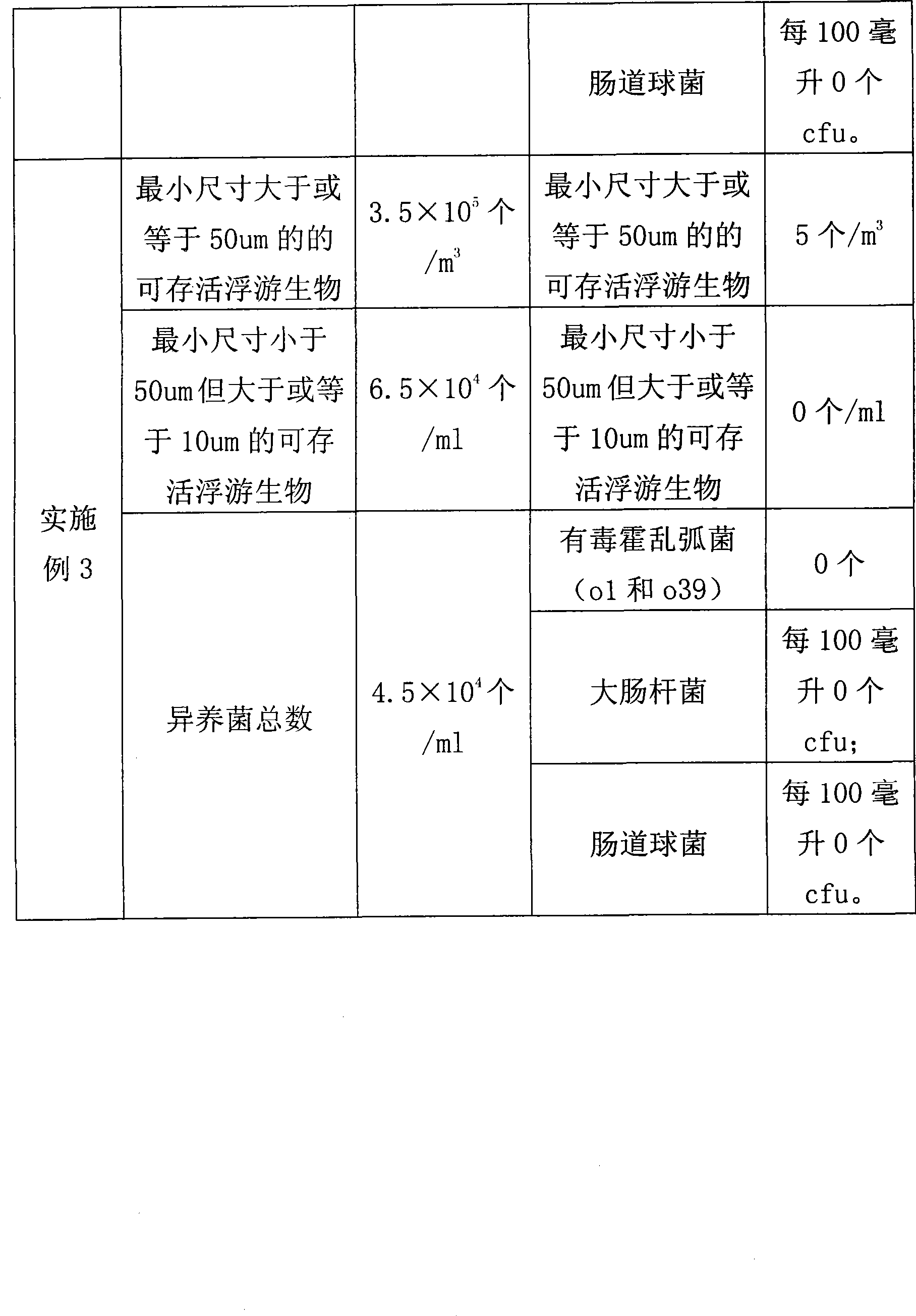Composite cruising ballast water treatment process
A technology for ship ballast water and treatment methods, applied in water/sewage treatment, water/sewage multi-stage treatment, water/sludge/sewage treatment, etc., can solve problems such as bulky equipment, difficult installation, and increased chemical substances , to achieve the effect of simple design process route, reliable working principle, and solution to the spread of pollution
- Summary
- Abstract
- Description
- Claims
- Application Information
AI Technical Summary
Problems solved by technology
Method used
Image
Examples
Embodiment 1
[0012] Embodiment 1: First adopt the automatic backwashing filter that filter precision is 30um to filter, then use the 5ppm sodium hypochlorite that electrolysis produces to carry out inactivation.
Embodiment 2
[0013] Embodiment 2: First adopt the automatic backwashing filter that filter precision is 40um to filter, then use the 10ppm sodium hypochlorite that electrolysis produces to carry out inactivation.
Embodiment 3
[0014] Embodiment 3: First adopt the automatic backwashing filter that filter precision is 35um to filter, then use 7.5ppm sodium hypochlorite produced by electrolysis to inactivate.
[0015] Table 1 Comparison of ballast water treatment effects of three examples
[0016]
[0017]
[0018]
PUM
 Login to View More
Login to View More Abstract
Description
Claims
Application Information
 Login to View More
Login to View More - R&D
- Intellectual Property
- Life Sciences
- Materials
- Tech Scout
- Unparalleled Data Quality
- Higher Quality Content
- 60% Fewer Hallucinations
Browse by: Latest US Patents, China's latest patents, Technical Efficacy Thesaurus, Application Domain, Technology Topic, Popular Technical Reports.
© 2025 PatSnap. All rights reserved.Legal|Privacy policy|Modern Slavery Act Transparency Statement|Sitemap|About US| Contact US: help@patsnap.com



